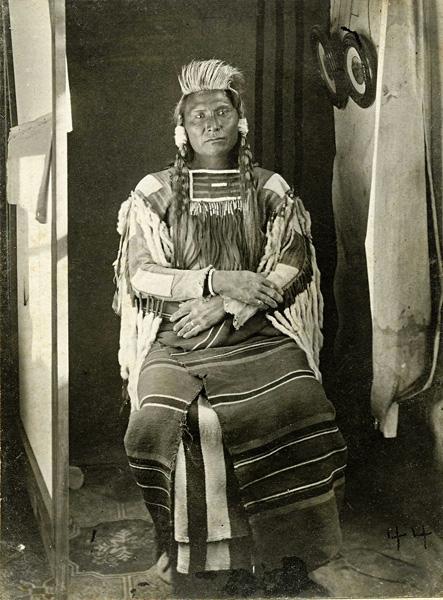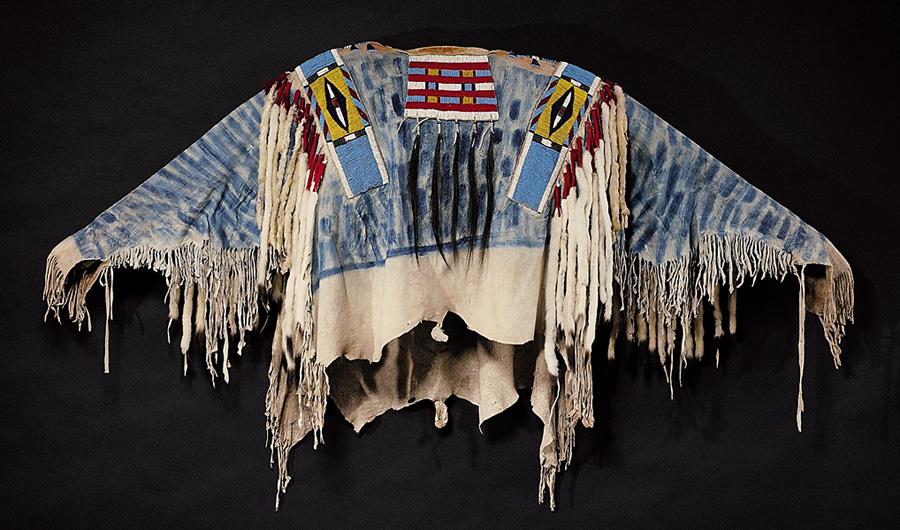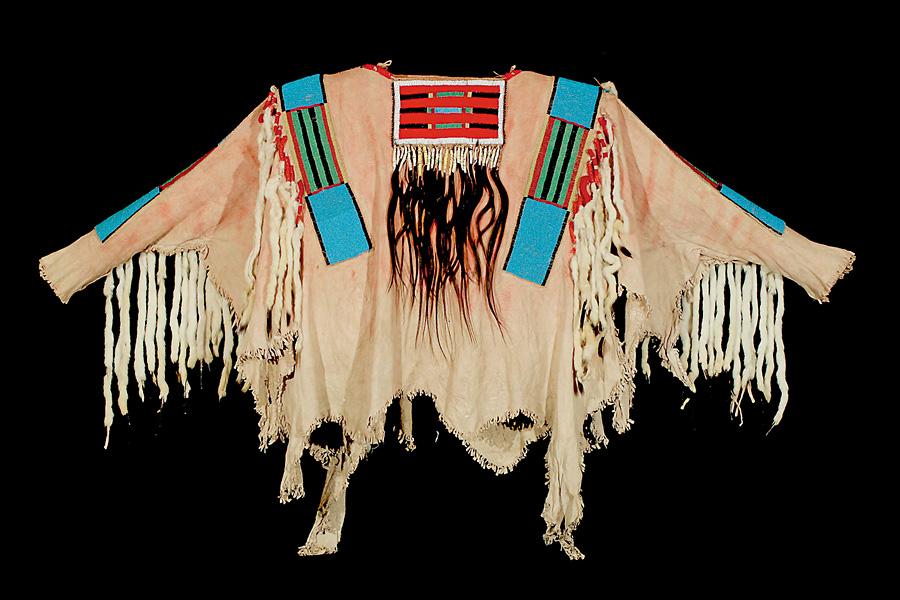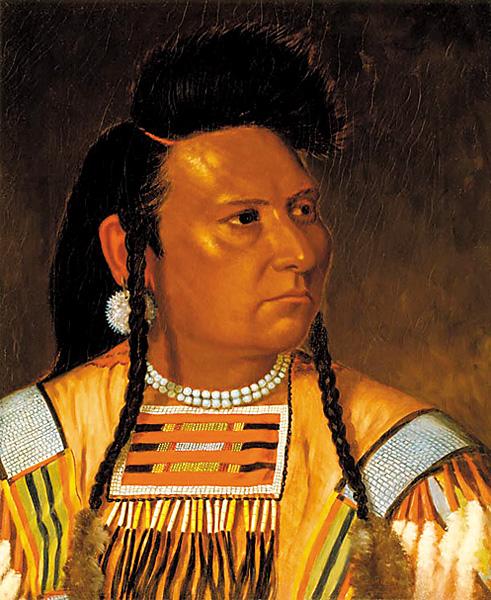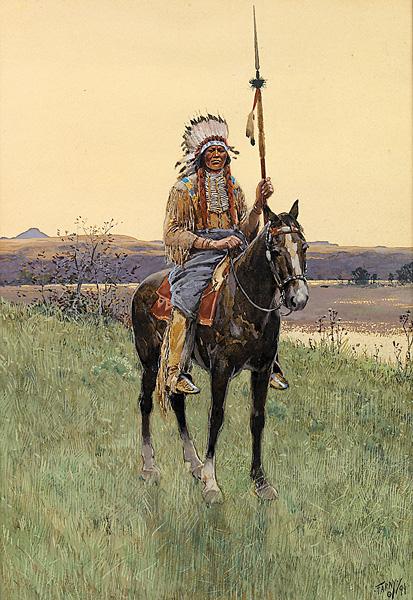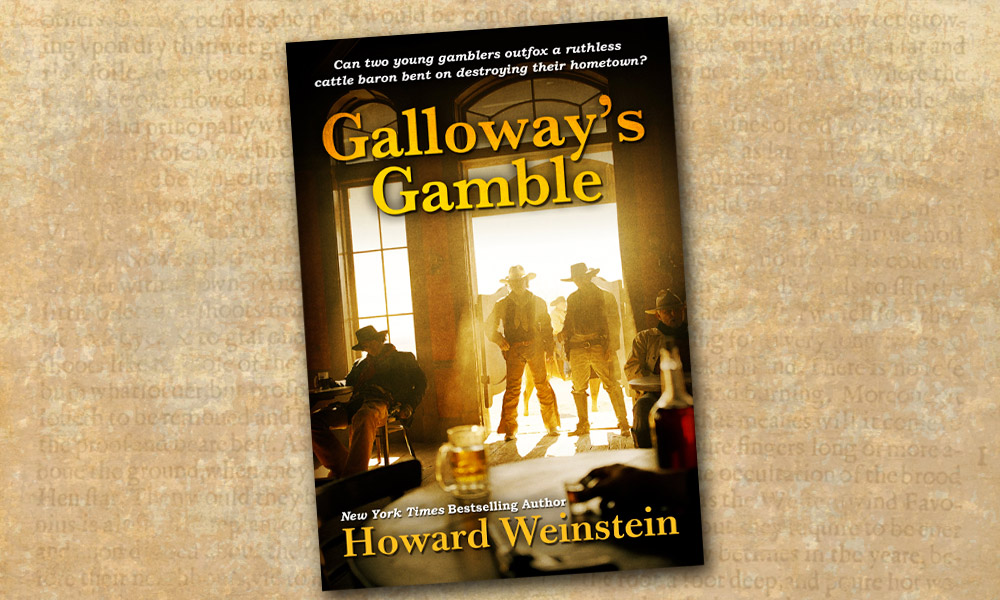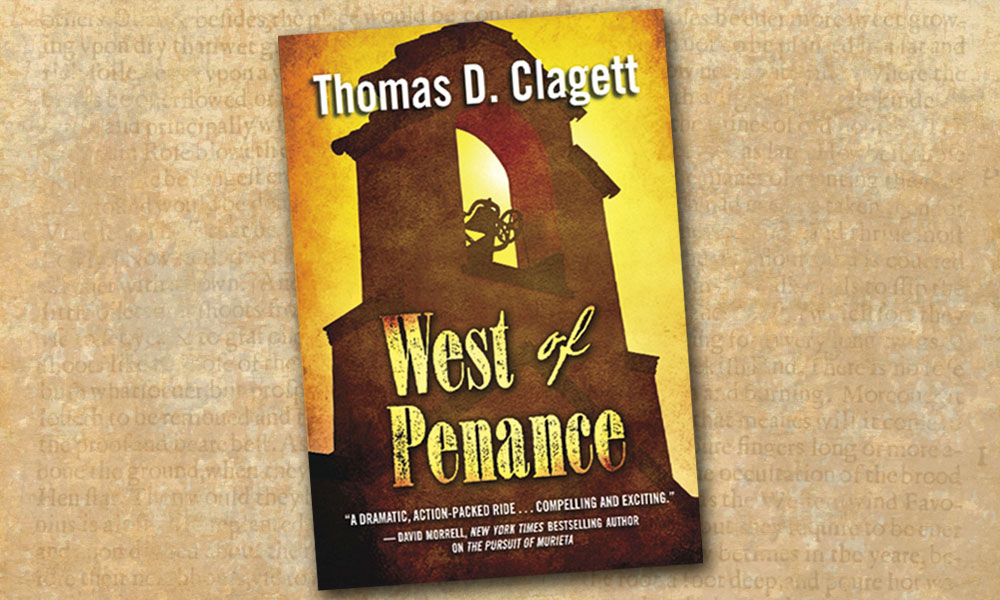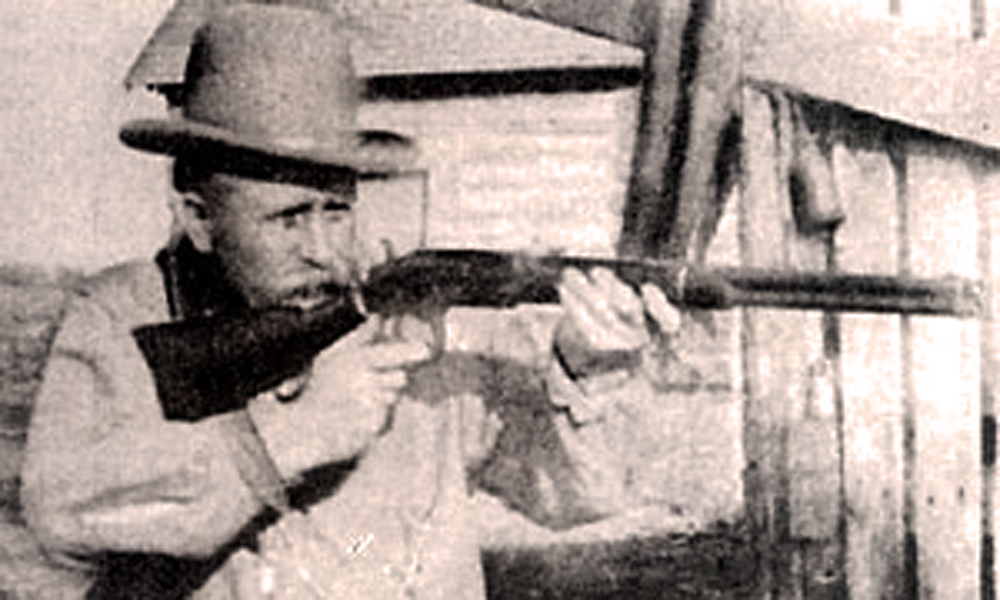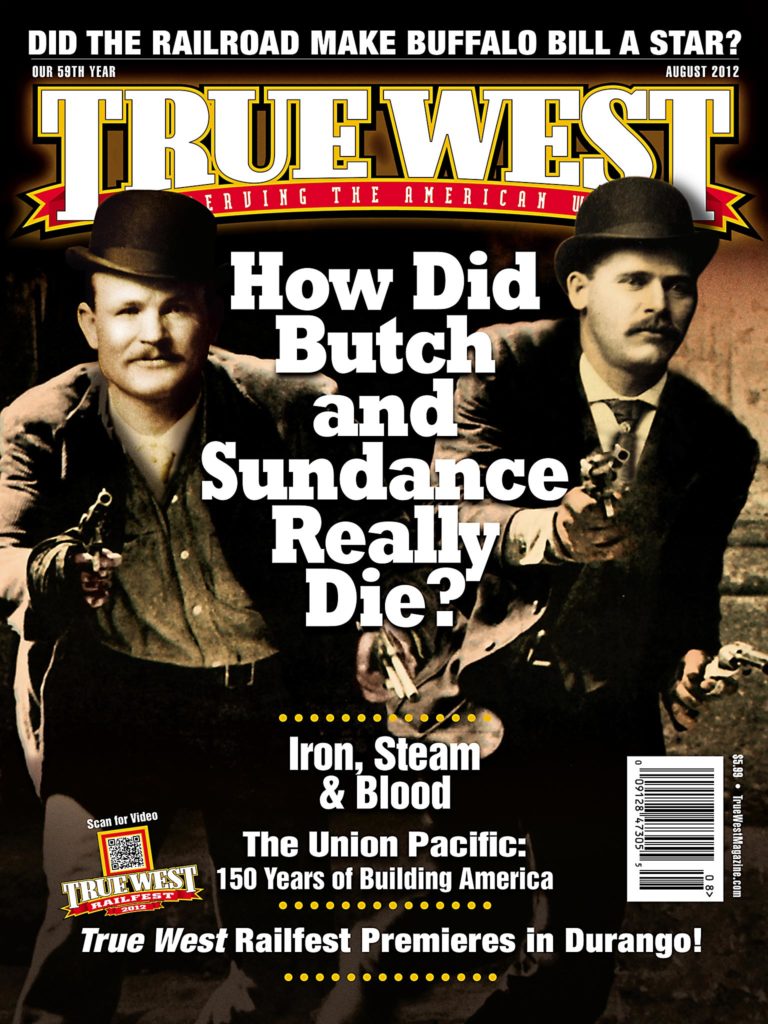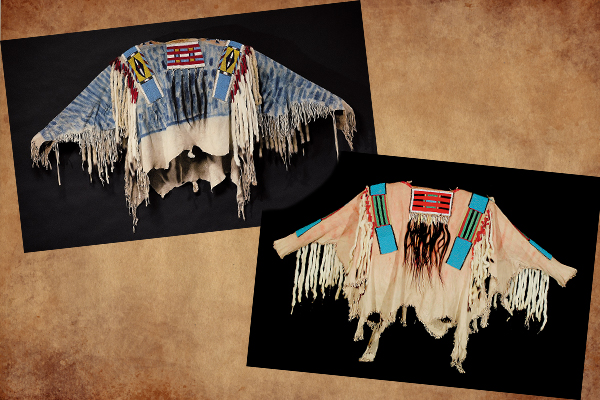 On June 20, 1905, “one of the greatest affairs of the kind” took place, a potlatch feast-giveaway of the belongings of Nez Perce Chief Joseph, who had died on September 21 in Nespelem, Washington, on the Colville Reservation.
On June 20, 1905, “one of the greatest affairs of the kind” took place, a potlatch feast-giveaway of the belongings of Nez Perce Chief Joseph, who had died on September 21 in Nespelem, Washington, on the Colville Reservation.
“Nearly every Indian present was given something,” reported the Seattle Post-Intelligencer. “The great war bonnet and war clothing went to three nephews.”
This year, 135 years after Chief Joseph famously surrendered 40 miles from the Canadian border and freedom, two war shirts with claims to the Nez Perce leader have made their way to the auction block.
One has sold at Sotheby’s New York, on May 16, for a $400,000 bid. The other will be up for sale at the Coeur d’Alene Art Auction in Reno, Nevada, this July 21. Its reserve price is $800,000 to $1.2 million.
The variance in value relates to how the provenance connects each shirt to the chief. The Sotheby’s shirt carries a letter of support from Stephen D. Shawley, the first curator of the Nez Perce National Historical Park. He stated Peopeo Tholekt received the shirt during the funeral giveaway, and that it was last seen in the possession of Jesse Redheart, Tholekt’s nephew.
Tholekt was likely among the potlatch attendees in 1905. Under the leadership of Looking Glass, he fought for the Nez Perce cause in 1877, dismantling the U.S. Army’s mountain howitzer during the Big Hole Battle and fighting near Bear Paw before the chief gave his surrender speech on October 5, discouraged by the deaths of Looking Glass and others, concluding: “From where the sun now stands, I will fight no more forever.”
Even more, Tholekt accompanied Chief Joseph in 1899 and 1900, when the chief unsuccessfully attempted to convince the government to make his birthplace, the Wallowa Valley in Oregon, into a reservation for his people.
At the same time, only oral history ties this shirt to Chief Joseph. That comes from Tholekt’s nephew, Jesse Redheart, whose home the warrior passed away at in 1935. Redheart participated in the 10th National Appaloosa Horse Show in August 1957, dressed up in this shirt, which Sports Illustrated reported as “attire inherited from his ancestor, Chief Joseph, leader of the Nez Perce Indians who developed Appaloosa.” He passed away in October 2010.
The Chief Joseph shirt being sold at Coeur d’Alene will likely meet, if not exceed, its higher reserve because it has the best kind of provenance—photographic proof. After Chief Joseph surrendered, he and his Nez Perce were force marched to Fort Keogh in Montana, where, sometime between their arrival on October 23, 1877, and their departure on October 31, he sat in John Fouch’s studio for a photo, which shows him wearing the shirt. We also know this was not a studio prop because, during his 1878 stay at Fort Leavenworth in Kansas, he sat for Cyrenius Hall, who created an oil portrait of him wearing the same shirt.
The tail wisps on the bib of the shirt match up perfectly with the wisps in the photograph, and the beaded pattern in the shirt is exact, says Stuart Johnson, owner of Settlers West in Tucson, Arizona, and a partner at the Coeur d’Alene auction house. He also adds that it’s physically impossible to duplicate the 30 or 40 hairlocks on the shirt so they’d be exactly the same.
When Johnson showed the shirt to Mike Miller, a restorer of Indian artifacts in Kalispell, Montana, Miller told him, “If I had all the items, all the particular pieces that went into making this shirt—the hairlocks, the beads—I could not put together a shirt that looks like this. The techniques they used have been lost in time.”
Unlike the Sotheby’s shirt though, no one was claiming this shirt was Chief Joseph’s. A collector purchased it at an Indian relic show in the 1990s and then sold it to another collector, who ultimately connected it to the shirt worn by Chief Joseph in the Fouch photo.
“The shirt is in remarkably good condition, because this would have been like his tuxedo; it was only worn at special times,” Johnson says. “It’s why he was so proud of his portrait being taken and the painting being made, that he would wear his very best garb.”
Known as a prestigious auction house for selling Western artworks, Coeur d’Alene is not about to add Indian artifacts to its catalogues, Johnson admits, but the partners also couldn’t pass up on the opportunity to sell such an important piece of history.
“If you gave me all the money in the world, I don’t think I’d be able to come up with an item of more historical and cultural value than this shirt has,” Johnson says. “If you picked the most famous Indians who ever lived, Joseph certainly stands at the head of the list, and here is his most famous prized possession, after one of the most famous Indian wars in American history. There just couldn’t be a more important item from that whole Indian War period.”
For American Indian artifact collectors, the chance to bid on two Chief Joseph shirts in the same year is incredible luck.


